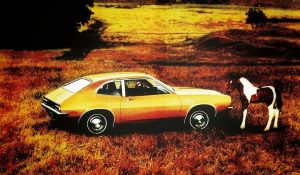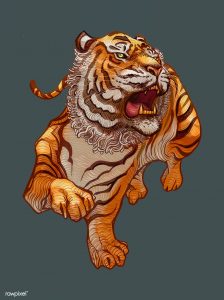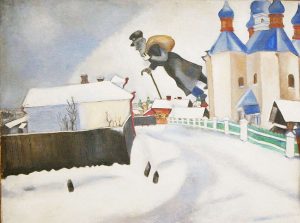Write a blog that hyper-links your research on the characters in GGRW according to the pages assigned to you. Be sure to make use of Jane Flicks’ GGRW reading notes on your reading list.

Northrop Frye, the quintessential mid-twentieth century Canadian literary critic, has found himself unknowingly and posthumously playing an integral part in the literary resistance permeating Thomas King’s novel, Green Grass, Running Water. Frye, both in his philosophy and his historical personality, comes to represent the Colonial status quo that King dismantles on route to helping us envisage alternate readings of our history and our stories. I am not just speaking about the character Joe Hovonaugh , who is inspired by Frye (Chester, 50), but of the novel’s structure in its entirety. The book itself, its fundamental way of being, is a stark contrast, if not a direct challenge to the literary world established in Frye’s writings. As Bianca Chester clearly explains, Frye was a structuralist who believes that meaning text is always confined to world of literature and thus has “less to say about the outside world than it does about something called “literariness.”(Chester, 50). King completely challenges this role of literature. He tells stories where history, politics, and mythical narratives live as equal partners. The paper acts as a meeting point, a bridge, a safe space where fiction and fact can share a bedroom without the truth police breathing down their necks. The division of labour is absolute, even the reader has a role to play. While, at times, his book reads with passive ease of a harlequin novel, it quickly becomes clear that a little more effort will go a long way. Important pop- culture references, political satire, Indigenous knowledge and historical allusions, are planted like seeds throughout the pages and with the necessary doses of curiosity and diligence the meaning and importance of the text grows exponentially.
In the following paragraphs, we will journey as engaged readers through ten pages of King’s novel and take the time to uncover the stories that lay beneath the story. Herein lies the essence of what Chester calls the “dialogic” meaning making in King’s text (Chester,47) By layering the story, King begins conversations at all levels which puts distinct parts of the puzzle in active dialogue. The reader is in dialogue with the author, realist narratives are in dialogue with mythical ones, history is in dialogue with popular culture, and literariness is in conversation with the ‘real’ world.
Pgs 212-222 (1993 edition)
Disney, Pocahontas and Indian Industry
At the beginning of this section in the book we are located in Los Angeles, amidst the return of Charlie and his father, Portland, to Hollywood. Following the passing of his wife, Portland (whose name is also that of largest city in Oregon ,a relevance I have yet to ascertain), has brought his son with him to the capital of the film industry as he tries to revive his latent acting career. Instead of the jumping back on to the big screen, however, Portland finds himself working in a strip club called “Four Corners” playing the token angry and belligerent savage who first intimidates the innocent Pocahontas and then seduces her with his wild antics (King 212).
The name of the club itself, Four Corners, is , as Jane Flick points out, a darkly satirical allusion to a place, in the southwestern United States, where Arizona, Utah, New Mexico, and Colorado meet and which is of significant cultural import to Native Americans (Flick 158). The sad irony being that in the burlesque club the patrons are entertained by a dance that highlights the racist, Eurocentric, and deeply offensive portrayal of Indigenous people/culture in mainstream media. Pocahontas, the main erotic draw of the show, is based on the historical figure that Disney has made famous (in their movie of the same title) that depicts a romanticized image of the savage princess whose super-model figure and wild beauty is a prize to be won by conquering European settlers. Even in current American politics the name Pocahontas has taken on a life of its on and been used to demean and ridicule female politicians associating with their Indigenous heritage
Of course, the strip club is only one example of King’s major fascination with the media’s (and specifically film’s) historical representation of Indigeneity. After Four Corners, we return to Portland’s home where we (re) encounter Portland’s old friend C.B Cologne , who is Italian and also has played many of the “Indian” leads in the classic Westerns. Cologne’s name is a cynical nod at Christopher Columbus (his Spanish name was Colon) who is famous for being the first explorer to “discover” America (Flick 153). The reference to Columbus seems to draw our attention to the way Europeans , echoing the way the Columbus erroneously gave them their name based on his own narratives, have manufactured (in no small part through film) an image of the “Indian” to fit with their perspective of reality.
Alberta is Alberta Frank and Old is New
In the next few pages we skip to the realist storyline involving Alberta Frank and her continued struggle to decide how to have a baby without involving a man. Alberta’s name is an obvious reference to the Province that much of the novel rotates around. It is also suggested that her last name, Frank, might either refer to her “frank” personality or ,alternatively, to the deadly rockslide in Frank, Alberta in 1903. While the rockslide connection is interesting and adds another layer of possible dialogue (the relationship between individual people and larger historical events), I find myself more interested in the conversation between the Alberta, the Province and Alberta, the person. The Province of Alberta is home to the Blackfoot as well as some of the most stunning natural landscapes but it is also home to modern industry that is devastating the land at an alarming rate. In Alberta, the character, there is also this contradiction, the wrestle between worlds. This desire to move forward, to birth the next generation but a simultaneous fear of the masculine energy (which some might also associate with resource extraction) that threatens to mess it all up.
In this same section Alberta imagines Charlie mounted on a pinto “ briefcase in one hand, the horse’s mane in the other, his silk tie floating behind him” (King 214). The pinto horse is of significance because they are closely associated with the “painted” ponies that are depicted in Cheyenne paintings at Fort Marion but are also a make of Ford car that features in the novel ( Bobo’s and eventually Charlie’s rental) (Flick 146) . The juxtaposition of horse and car echoes King’s theme of the overlap and possible tensions between traditional and modern (Western) ideals.
Next, we return to Lionel watching a Western on TV (the same Western that everybody seems to be watching that night in Blossom, Alberta). However, the film does not run its normal course. Pushing the boundaries between fiction and fantasy, King interjects non-rational occurrences in to his realist narrative. First off, “four old Indians” are seen in the movie, waving their lances on the banks of the river with one “wearing a red Hawaiian shirt” (King 216). The old “Indian” are the same four escapees from the asylum in Florida . They take on different names during the novel but they are quite clearly representing the seventy- two native Americans who (see Cheyenne paintings at Fort Marion above) were captured and held captive for nothing more than being “Indian”. As Marlene Goldman mentions , the novel’s reference to the Fort Marion prisoners ,”serves as a formal and thematic touchstone that highlights the challenge of the novel to the imposition of non-Native boundaries and enclosures and, more generally, to European modes of mapping.” (Goldman 21) By placing these four characters inside a traditional ‘Cowboy Western’ with the likes of John Wayne and Richard Widmark, King is forcibly disturbing these boundaries and demanding that we dialogue with the narratives that these films are perpetuating. In turn, the presence of the “four old Indians”, who are also representing the Cayote-Trickster transformers of Indigenous culture, signals the start of a total reclamation of the Hollywood story which ends later in the book with a successful Indigenous revolt (stunning all the viewers who cannot believe that a movie they know should end one way, does not).
Dr. Evil?
The final sub plot of this section is that involving Dr. Joe Hovaugh, the director of the prison/asylum at Fort Marion, who is obsessed with re-capturing his escaped inmates. The doctor is a character that plays and converses on many levels. To begin, his name is a clear word play on Jehovah, which might be away for King to highlight the Christian narratives that played a large role in Colonial worldviews. Going deeper into the character of Hovaugh, however, it has been understood that King modeled him off Northorp Frye and his ‘closed system’ approach to literature and the world (Chester 49). Coming full circle with the opening paragraph of this blog, we see how King uses literature and story as a space for conversation. He challenges Frye, not by arguing with him directly, but rather by telling stories that hold characters, allusions and references that clearly break down the walls that Frye was convinced existed between t literature and the world outside.
Works Cited
Chester, Blanca. “Green Grass, Running Water: Theorizing the World of the Novel.” Canadian Literature 161-162. (1999).Web. 14 Mar. 2019
Flick Jane. “Reading Notes for Thomas King’s Green Grass, Running Water.” Canadian Literature 161/162 (1999). Web. 14 Mar. 2019
Fox, Jana. Tricksters As Transformative Teachers. Transformative Educational Leadership Journal, 2017. Web. 15 Mar. 2019
“Four Corners Region Geotourism Map”. National Geographic. Web. 14 Mar. 2019
Gale, Thomson. “Christianity And Colonial Expansion In The Americas”. Encycolpedia.com, 2007. Web. 14 Mar. 2019
Goldman, Marlene. “Canadian Literature: Mapping and Dreaming: Native Resistance in Green Grass, Running Water”. University of British Columbia Press, 1999. Web. 14 Mar. 2019
King, Thomas. “Green Grass Running Water”. Toronto: Harper Collins, 1993. Print.
Morton, Ellen. “The Dramatic Remains of Canada’s Deadliest Landslide“. Slate, 2014.Web. 14 Mar. 2019
Poc, Nerdy. “Examining Racist Tropes In Disney Animated Films“. Medium.com, 2017. Web. 14 Mar. 2019
“Pinto Horse“. Petguide.com. Web. 14 Mar. 2019
Sachs, Honor. “How Pocahontas — the myth and the slur — props up white supremacy”. Washington Post, 2018.Web. 15 Mar. 2019
Image
Hurd, Dennis Sylvester. “1971 Ford Pinto Print Ad“. Flickr, 2018. Web. 14 Mar. 2019



 Robinson’s story of the twin brothers , despite what one might have predicted , did not evoke a feeling of defensiveness in me as a “European descendant” but rather left me hopeful and positive about facing the truth of our past and moving forward towards
Robinson’s story of the twin brothers , despite what one might have predicted , did not evoke a feeling of defensiveness in me as a “European descendant” but rather left me hopeful and positive about facing the truth of our past and moving forward towards  Growing up in Vancouver, we always had a rotating family
Growing up in Vancouver, we always had a rotating family  When I was in my mid-twenties I lived in Paris for about four years. What an amazing place to be for a young, aspiring theatre artist. Every moment was rich with inspiration and beauty. Sitting in a cafe you felt part of a novel, walking down the street you were in a painting, and just being a few hours in a town square would provide enough drama to fill five acts many times over. Yet, the city also had a dark side. In the winter, the sky was grey, the buildings were grey, and the people often turned sour and bitter. One day, after a particularly gruesome visit to the immigration office (which is infamous for treating applicants as if they were all thieves or five year-olds in need of a spanking), I found myself in tears sitting on a hard park bench, alone. In that moment, images of the BC forests began to emerge in my mind. I would eventually call my parents and talk through my troubles but my initial comfort did not come from people but rather from the trees. Imagining the sights and smells of the endowment land forest I had roamed freely as a child was enough to give me the strength to go on.
When I was in my mid-twenties I lived in Paris for about four years. What an amazing place to be for a young, aspiring theatre artist. Every moment was rich with inspiration and beauty. Sitting in a cafe you felt part of a novel, walking down the street you were in a painting, and just being a few hours in a town square would provide enough drama to fill five acts many times over. Yet, the city also had a dark side. In the winter, the sky was grey, the buildings were grey, and the people often turned sour and bitter. One day, after a particularly gruesome visit to the immigration office (which is infamous for treating applicants as if they were all thieves or five year-olds in need of a spanking), I found myself in tears sitting on a hard park bench, alone. In that moment, images of the BC forests began to emerge in my mind. I would eventually call my parents and talk through my troubles but my initial comfort did not come from people but rather from the trees. Imagining the sights and smells of the endowment land forest I had roamed freely as a child was enough to give me the strength to go on. It was once again the time for the Cosmic Spiritual Trainers Annual General Meeting and all three of the invited guests were excited. As always, they would meet to share anecdotes of their past year and demonstrate their new methods for helping humans to build up mental and spiritual stamina for species advancement. In the small but cozy celestial command centre they had a great view of the human world below where their covert spiritual exercises would play out. Of course, the training had to happen under the radar of the clients because if they knew it was a training exercise they would be tempted to give up or ask for help. It was crucial that they believe everything to be within the natural order of universal laws and that their success or failure was purely measured by their own abilities. The measurement of a great trainer was their ability to reveal the hidden strengths of their clients while hiding their own revelatory abilities.
It was once again the time for the Cosmic Spiritual Trainers Annual General Meeting and all three of the invited guests were excited. As always, they would meet to share anecdotes of their past year and demonstrate their new methods for helping humans to build up mental and spiritual stamina for species advancement. In the small but cozy celestial command centre they had a great view of the human world below where their covert spiritual exercises would play out. Of course, the training had to happen under the radar of the clients because if they knew it was a training exercise they would be tempted to give up or ask for help. It was crucial that they believe everything to be within the natural order of universal laws and that their success or failure was purely measured by their own abilities. The measurement of a great trainer was their ability to reveal the hidden strengths of their clients while hiding their own revelatory abilities. Several times throughout his book, Chamberlain warns us against cornering ourselves into the unenviable situation quoted above (32, 127, 239). The repetition of this metaphor signals its significance in Chamberlain’s over-arching thesis. Yet, the fun of metaphors is that they are never straight forward but ,rather, demand us to forge our way along the winding path of meaning. The image was easy to conjure in my mind; Floating helplessly in the ocean and grasping tenaciously to a single plank of wood, I come across a a deserted island where I am forced to choose between living stranded and alone or to keep holding on and eventually drowning in the waters. But to truly understand this metaphor, context seemed crucial. In the book, the metaphor consistently appears at times when the author is questioning the distinction between reality and imagination. Chamberlain seemed to be waving a red flag and pointing towards the common trap of false dichotomy (i.e. Good vs. Evil, False vs. Truth, Real vs . imagined, Us and Them). He is highlighting the way these distinctions close our minds and force us into a place of judgment and categorization of “others” and cutting off alternatives for compromise and understanding. Until, in a way, we are left clinging helplessly to a single piece of wood. The tragedy, according to my reading of the metaphor above, is that we needn’t think in these dilemmas (or dichotomies) at all. Humans are capable and even naturally suited to living in contradiction. Stories are the best example of this. Across cultures and across time, myths and stories have occupied a space of paradox that exists between reality and fiction and have allowed for belief and non-belief to live in peaceful co-existence. In light of this perspective, and to attempt an answer part of the above question, the settlement of the Americas , can be understood, not only as an appropriation of land but also the appropriation of reality. The violence of settlement, according to Chamberlain, is found as much in the dismissal of others beliefs as it was of their territorial rights. The settler had tragically convinced themselves that they had to either make a life on the deserted island or drown.
Several times throughout his book, Chamberlain warns us against cornering ourselves into the unenviable situation quoted above (32, 127, 239). The repetition of this metaphor signals its significance in Chamberlain’s over-arching thesis. Yet, the fun of metaphors is that they are never straight forward but ,rather, demand us to forge our way along the winding path of meaning. The image was easy to conjure in my mind; Floating helplessly in the ocean and grasping tenaciously to a single plank of wood, I come across a a deserted island where I am forced to choose between living stranded and alone or to keep holding on and eventually drowning in the waters. But to truly understand this metaphor, context seemed crucial. In the book, the metaphor consistently appears at times when the author is questioning the distinction between reality and imagination. Chamberlain seemed to be waving a red flag and pointing towards the common trap of false dichotomy (i.e. Good vs. Evil, False vs. Truth, Real vs . imagined, Us and Them). He is highlighting the way these distinctions close our minds and force us into a place of judgment and categorization of “others” and cutting off alternatives for compromise and understanding. Until, in a way, we are left clinging helplessly to a single piece of wood. The tragedy, according to my reading of the metaphor above, is that we needn’t think in these dilemmas (or dichotomies) at all. Humans are capable and even naturally suited to living in contradiction. Stories are the best example of this. Across cultures and across time, myths and stories have occupied a space of paradox that exists between reality and fiction and have allowed for belief and non-belief to live in peaceful co-existence. In light of this perspective, and to attempt an answer part of the above question, the settlement of the Americas , can be understood, not only as an appropriation of land but also the appropriation of reality. The violence of settlement, according to Chamberlain, is found as much in the dismissal of others beliefs as it was of their territorial rights. The settler had tragically convinced themselves that they had to either make a life on the deserted island or drown. Hi. My name is Laen Avraham Dov Hershler. I am the child of Jewish immigrant (settlers) to Canada from South Africa in the 1970s. My great grandparents had been settlers to South Africa from Latvia, Lithuania, Israel and Hungary. While I am born and raised in Canada, my historical ties to this land is rather tenuous. In fact , based on my families active migration patterns, my only genetic claim to physical land is through my ancient tribal, Jewish roots (which is complex highly controversial topic). All this said, most of my formative years were spent above the 49th parallel and so, to that degree, I am Canadian.
Hi. My name is Laen Avraham Dov Hershler. I am the child of Jewish immigrant (settlers) to Canada from South Africa in the 1970s. My great grandparents had been settlers to South Africa from Latvia, Lithuania, Israel and Hungary. While I am born and raised in Canada, my historical ties to this land is rather tenuous. In fact , based on my families active migration patterns, my only genetic claim to physical land is through my ancient tribal, Jewish roots (which is complex highly controversial topic). All this said, most of my formative years were spent above the 49th parallel and so, to that degree, I am Canadian.